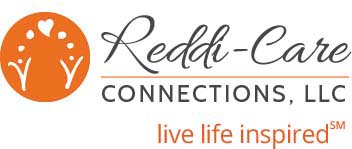
Dementia, a complex and progressive neurological disorder, necessitates a thoughtful and meticulous approach to care. One of the critical aspects of providing effective support for individuals with dementia is comprehensive assessment and care planning. This process ensures that care is tailored to the unique needs, preferences, and challenges of each person, ultimately enhancing their quality of life. In this blog post, we will explore the essential components of dementia assessment and care planning, highlighting best practices and practical strategies for caregivers and healthcare professionals.
Understanding the Importance of Assessment and Care Planning
Assessment and care planning in dementia are foundational to delivering person-centered care. This process involves evaluating the individual’s cognitive, physical, emotional, and social needs, followed by developing a detailed, personalized care plan that addresses these needs comprehensively.
Effective assessment and care planning can:
Enhance Quality of Life: By identifying specific needs and preferences, caregivers can provide support that enhances the individual’s well-being and satisfaction.
Improve Symptom Management: Accurate assessment helps in identifying symptoms and challenges early, enabling timely interventions.
Reduce Stress for Caregivers: A well-structured care plan provides a clear roadmap, reducing uncertainty and stress for caregivers.
Facilitate Communication: It ensures consistent and effective communication among the care team, including family members, healthcare providers, and other caregivers.
Components of a Comprehensive Assessment
A comprehensive assessment for individuals with dementia should be multi-faceted, involving various domains to ensure a holistic understanding of their condition and needs. Key components include:
1. Cognitive Assessment
Cognitive assessment aims to evaluate the extent and nature of cognitive impairment. Common tools include:
Mini-Mental State Examination (MMSE): A widely used tool that assesses various cognitive functions such as memory, attention, and language.
Montreal Cognitive Assessment (MoCA): Another popular tool that provides a more detailed evaluation of cognitive functions.
VAMC Saint Louis University Mental Examinations (SLUMS): Screen individuals to look for the presence of cognitive deficits, and to identify changes in cognition over time.
2. Physical Health Assessment
Physical health significantly impacts the well-being of individuals with dementia. This assessment includes:
Medical History Review: Evaluating past and current medical conditions, medications, and family health history.
Physical Examination: Regular check-ups to monitor vital signs, mobility, and overall physical health.
Nutritional Assessment: Ensuring the individual’s dietary needs are met and identifying any nutritional deficiencies.
3. Psychosocial Assessment
Psychosocial assessment evaluates the emotional and social well-being of the individual. It includes:
Mental Health Evaluation: Assessing for signs of depression, anxiety, or other mental health issues.
Social Interaction: Understanding the individual’s social networks, relationships, and levels of social engagement.
Behavioral Assessment: Identifying any behavioral changes or challenges, such as aggression, agitation, or withdrawal.
4. Functional Assessment
This assessment focuses on the individual’s ability to perform daily activities and maintain independence.
Tools used include:
Activities of Daily Living (ADL) Scale: Measures basic self-care tasks such as bathing, dressing, and eating.
Instrumental Activities of Daily Living (IADL) Scale: Evaluates more complex activities required for independent living, such as managing finances, medication, and transportation.
Developing a Personalized Care Plan
After a thorough assessment, the next step is to develop a personalized care plan. This plan should be dynamic, evolving as the individual’s condition progresses and their needs change. Key elements of an effective care plan include:
1. Setting Goals
Care plans should begin with clear, achievable goals that reflect the individual’s preferences and priorities. These goals might include maintaining mobility, improving social engagement, or managing specific symptoms.
2. Interventions and Strategies
Based on the assessment findings, specific interventions and strategies should be outlined. These might include:
Medical Interventions: Medication management, treatment plans for coexisting conditions, and regular health check-ups.
Therapeutic Activities: Cognitive therapies, physical exercises, and recreational activities tailored to the individual’s interests and abilities.
Environmental Modifications: Adapting the living environment to enhance safety and comfort, such as installing grab bars, reducing clutter, and using memory aids.
3. Roles and Responsibilities
Clearly defining the roles and responsibilities of all caregivers and healthcare providers involved is crucial. This ensures coordinated care and avoids overlaps or gaps in support.
4. Monitoring and Review
Regular monitoring and review of the care plan are essential to ensure its effectiveness. This includes:
Routine Assessments: Periodic re-evaluation of cognitive, physical, and psychosocial status to track changes and adjust the care plan accordingly.
Feedback Mechanisms: Encouraging feedback from the individual, family members, and caregivers to identify areas for improvement.
Best Practices for Effective Assessment and Care Planning
To achieve the best outcomes, caregivers and healthcare providers should adopt the following best practices:
1. Person-Centered Approach
Always prioritize the individual’s preferences, values, and experiences. Engage them in the assessment and care planning process to ensure their voice is heard and respected.
2. Collaborative Care
Involve a multidisciplinary team, including doctors, nurses, social workers, therapists, and family members. This collaborative approach ensures comprehensive support and diverse perspectives.
3. Continuous Education and Training
Caregivers and healthcare providers should receive ongoing training in dementia care best practices, assessment tools, and communication strategies to stay informed and effective.
4. Use of Technology
Leverage technology to enhance assessment and care planning. Digital tools can streamline the process, improve communication among the care team, and provide real-time updates.
5. Cultural Sensitivity
Be mindful of cultural differences that may influence the individual’s preferences and needs. Tailor the care plan to respect and accommodate these cultural aspects.
Challenges and Solutions
Implementing comprehensive assessment and care planning in dementia care can pose challenges, including:
Resource Limitations: Time, staff, and financial constraints can hinder thorough assessments and personalized care. Solutions include advocating for more resources, using volunteers, and leveraging community support.
Communication Barriers: Cognitive impairment can make communication difficult. Training in effective communication techniques and using assistive devices can help bridge this gap.
Resistance to Change: Some caregivers and institutions may resist adopting new practices. Education, demonstrating the benefits of person-centered care, and gradual implementation can help overcome resistance.
